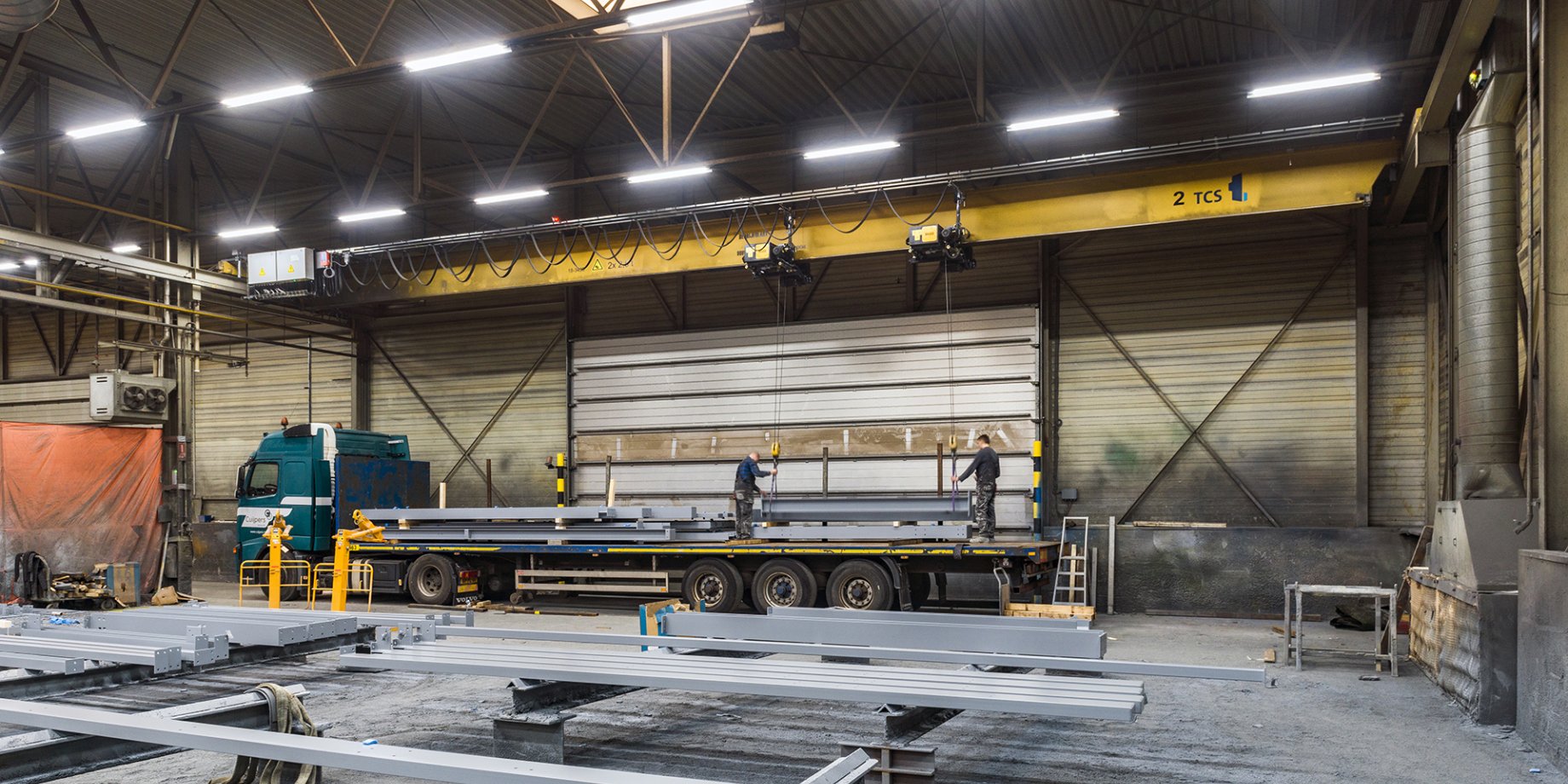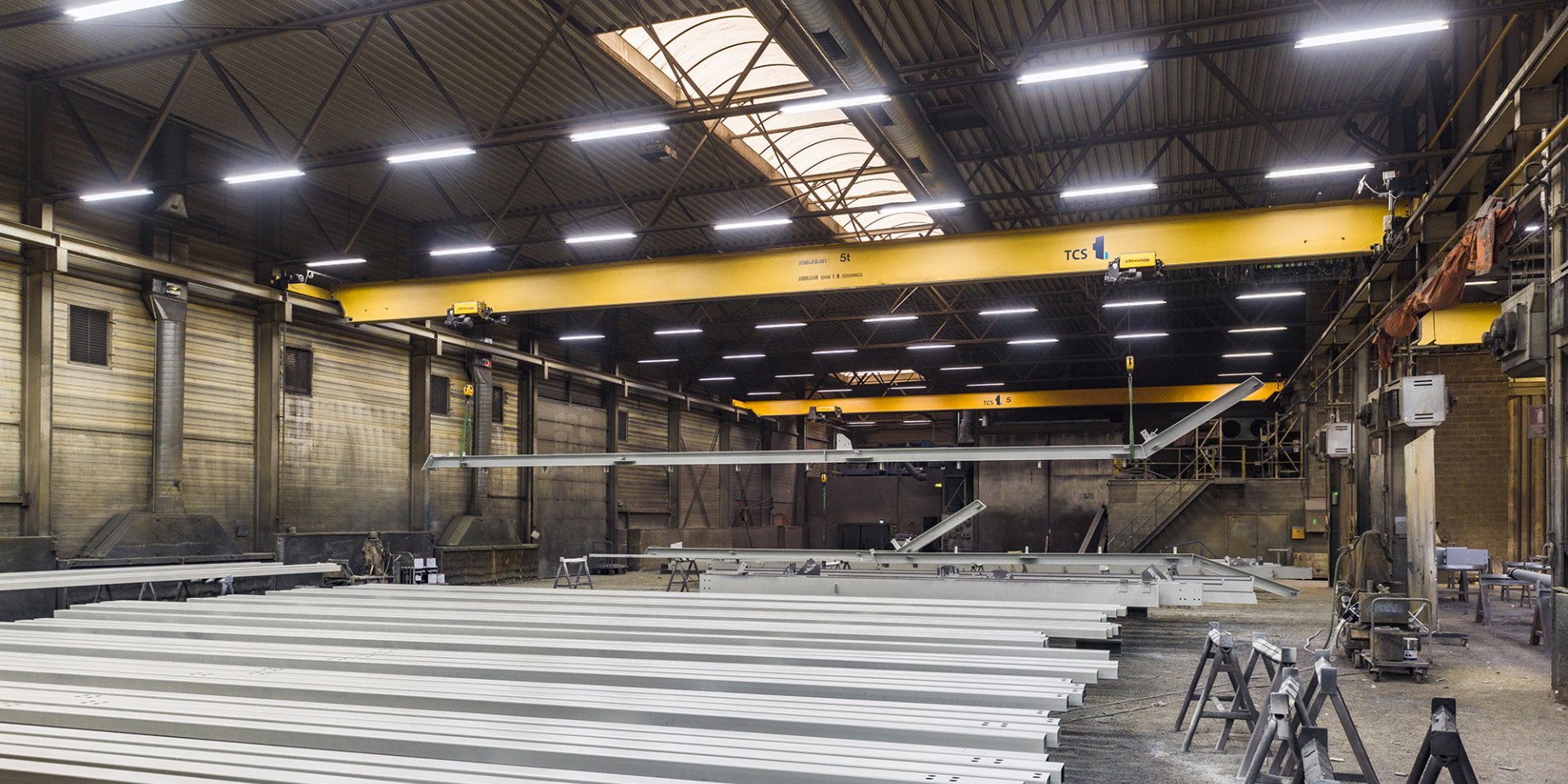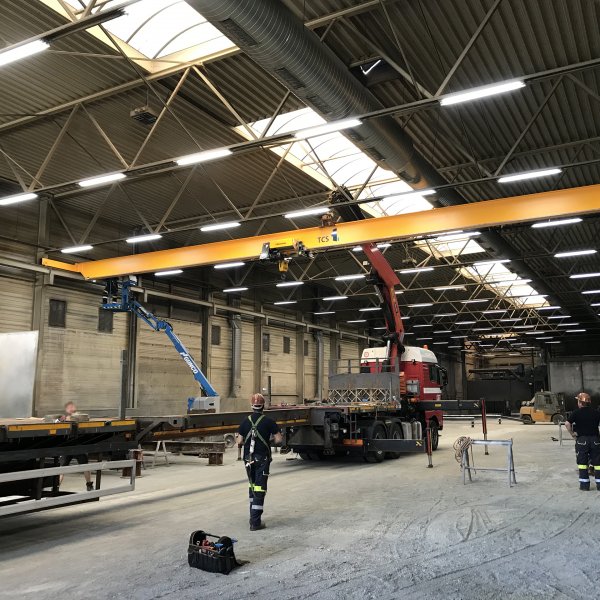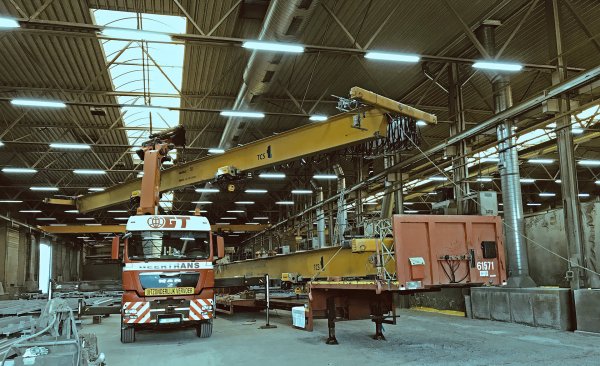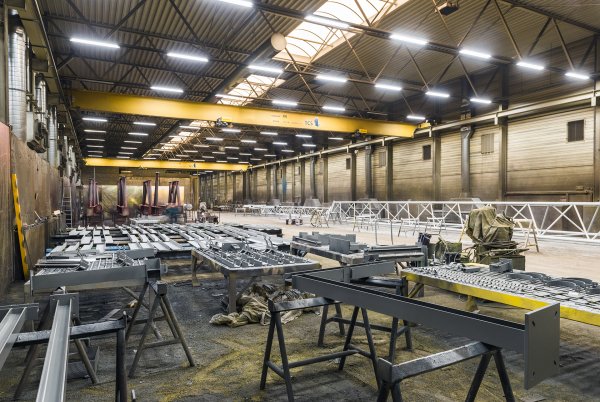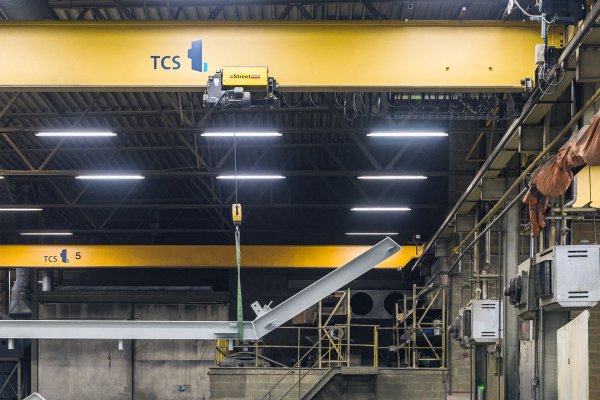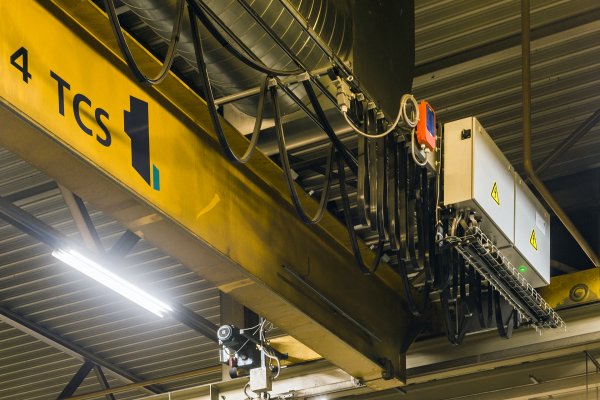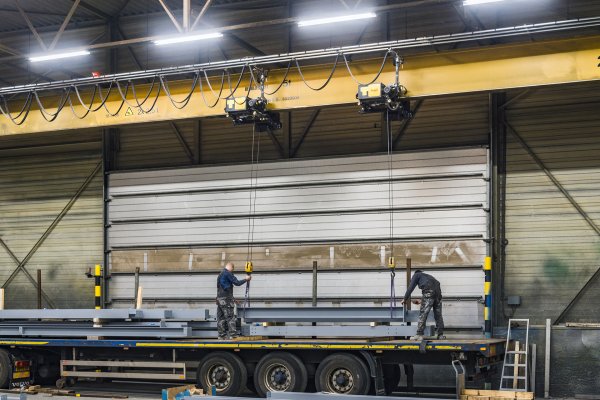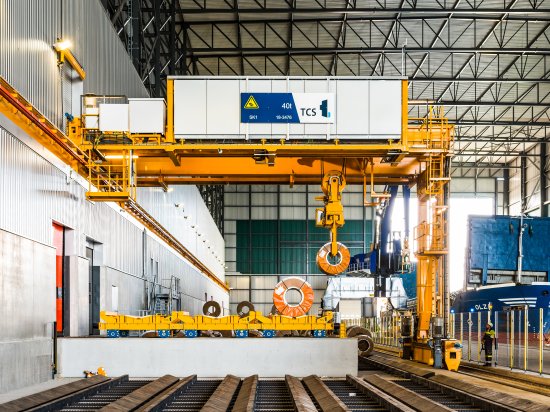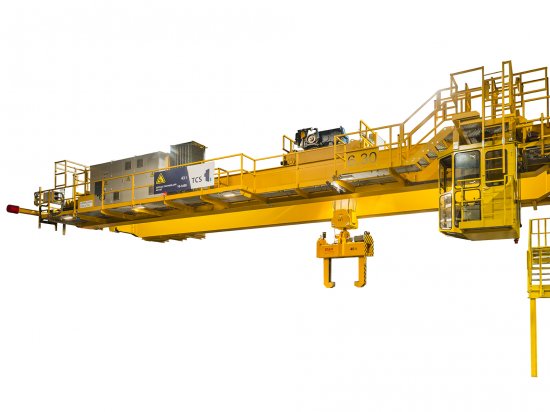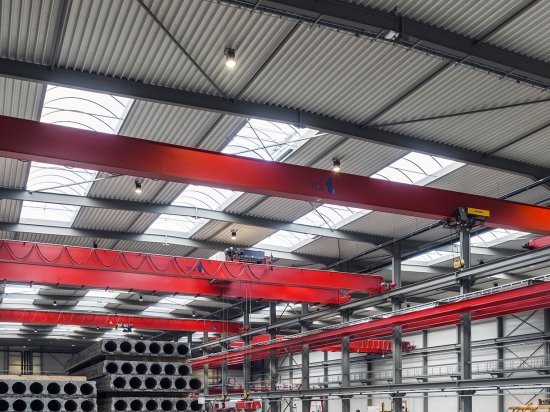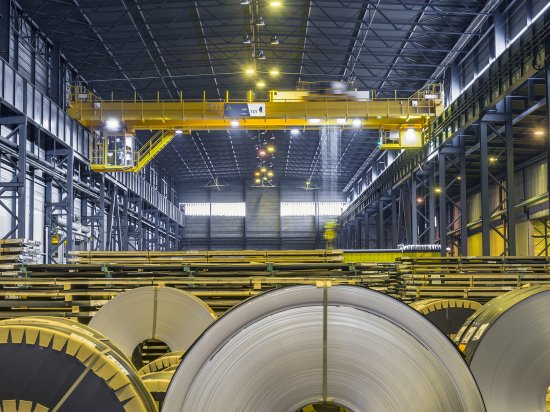Increasing productivity with dual-hoist cranes
In response, the company decided to create access gates in the buildings’ sidewalls and to convert the cranes from single to dual hoist. “This allows us to place workpieces parallel to the cranes and avoid having to shut everything down whenever a piece is moved. It’s a simple and straightforward idea, but one with huge benefits in term of productivity.”
In addition to revamping the existing cranes, an additional single-hoist 5-tonnes crane was installed towards the front to accommodate the spraying installation. Other features of the revamped cranes, such as the frequency-controlled drives, also contributed to the increase in productivity. “They make it easier for objects to be precisely manipulated and, most importantly, there is less wear and increased reliability.”
Installation was a matter of coming well-prepared. “TCS simply lifted out the existing cranes, made the necessary adaptations and reinstalled them, an operation that took no more than a day for each crane. At least one crane was available throughout, we never once had to halt production.”
